Preparedness is essential to enjoying outdoor activities: After all, you never know when or how things might go wrong and survival suddenly becomes a here-and-now priority. A piece of equipment that can make a critical difference in life-or-death situations—and which can serve all kinds of other handy purposes in the backcountry—is a reliable knife: the number-one thing that should be added to anyone’s outdoor checklist. There are a number of factors to weigh when shopping for a new knife, which, by the way, doesn’t necessarily have to break the bank. You can’t effectively choose a knife ideal for your purposes without first understanding the basic features and components of the tool, which is what this article’s all about.
What is a survival knife?
“A well-trained person needs only a knife to survive.”
– Mors Kochanski
If you’re new to knives, it’s important to realize there’s not necessarily such a thing as one survival knife perfect for every situation. That said, it’s certainly very possible to find a model that’ll have your back in both everyday outdoor tasks and sketchy survival challenges. A knife’s usefulness is just about boundless. You can wield it for everything from building a shelter and making other tools to even finding and purifying water. You need to learn a knife’s parts in order to know what to look for when choosing one.
Anatomy of a Survival Knife
Below, you’ll find an image of a survival knife and a list of its parts to help you learn your way around this amazing implement. Click on the name of a part to see it highlighted in the image.
Mind the law
Always check with local authorities before buying a knife to learn about what the law allows you to carry—and how—so you’re abiding by the rules. Every country has its own specific regulations concerning the handling of white arms; for example, some allow you to carry folding knives in a concealed manner—your pocket, for example—while mandating that fixed blades be open-carried in a sheath. To avoid significant fines or even jail time, it’s imperative to understand and comply with these laws—and those of any area you might be traveling to with a knife.
Features of a survival knife
The blade
Different types of blade serve different purposes, and all aren’t created equal when it comes to serving you in survival settings.
Fixed blade vs foldable blade
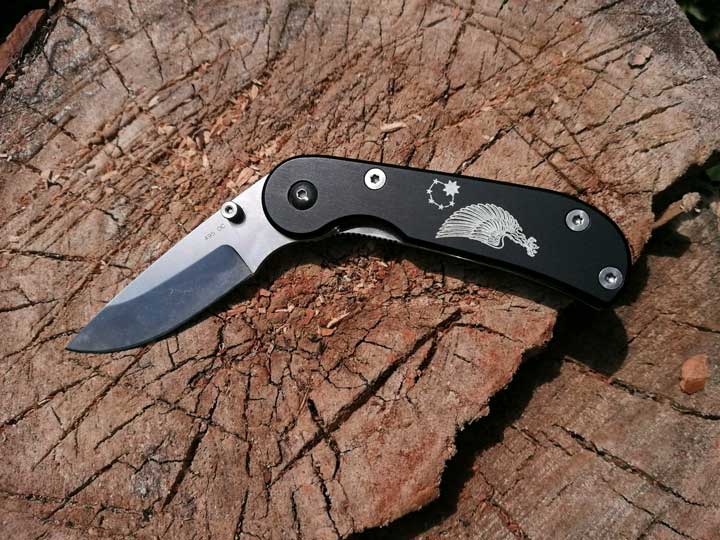
It goes without saying that when your life depends on a tool—and when you’ll be using it in rough, remote environments in general—you want it to be sturdy and reliable. A survival knife may be the only means at your disposal in a dangerous or desperate situation to execute certain vital tasks such as batoning, chopping, splitting, cutting, prying, and carving. These tasks apply stress to your knife, which in turn can shorten its lifespan. It follows that you’ll want to look for a strong, durable blade that’ll resist wear and tear when shopping for a survival knife.
Foldable knives are certainly practical and convenient: As they’re folded, their length shortens by half, which makes for easier—and concealed—carrying. The same foldable attribute that makes this type of knife practical, however, is the same thing that diminishes its appeal as a survival knife: The more moving parts, the weaker the knife. A folding knife’s great as a secondary knife, not your prime survival tool.
Straight vs Serrated blade edge
Serrated blades are specifically designed to cut rope and to hunt and butcher animals. Although serrated knives are plenty sharp, their shape makes it hard to hone the blade and to carve with it. A dull blade is dangerous: Even the dullest is still sufficiently sharp to wound you, and its less-keen edge means you might have to force it or apply more pressure to perform a cutting task, heightening the risk you’ll end up cutting or stabbing yourself. You’ll find both fully and partly serrated knives on the market; the more specialized fully serrated ones don’t perform certain tasks well.
Straight-edge blades are more versatile and can work well in almost any situation. They’re easily sharpened even with a smooth stone and are better candidates to serve as carving and batoning knives.
| Tasks | Serrated Blade Edge | Straight Blade Edge |
|---|---|---|
| Batoning | Okay | Better |
| Cutting Ropes | Easier | Harder |
| Cutting Tins | Easier | Harder |
| Cutting Wood | Okay | Okay |
| Skinning | Easier | Harder |
| Butchering | Easier | Harder |
| Gutting | Easier | Harder |
| Chopping | Harder | Easier |
| Splitting | Harder | Easier |
| Carving | Harder | Easier |
| Prying | Okay | Okay |
| Sharpening | Harder | Easier |
Short or long knife?
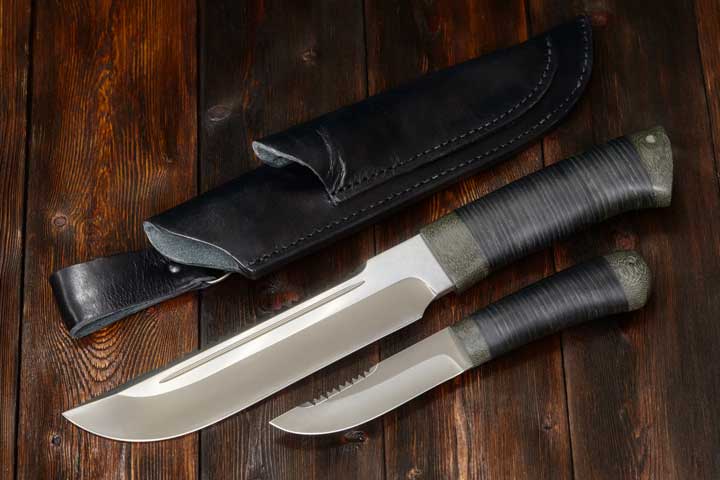
The “best” length for your knife is subjective and varies depending on the tasks you need it to do, your environment, and—of course—any local laws restricting the size of a legal knife. The length of the blade directly translates to what you can or cannot easily do with it. For precision work, smaller blades are better. If you’re hacking through jungle or other dense cover, a longer knife—a machete, for instance—is required; in sparser woods or open country, a stubbier blade may well be sufficient for your knife-work, given you don’t have to clear vegetation. When it comes to your main survival knife, a middle ground is generally best: You can adequately accomplish most necessary tasks with a blade measuring between 4” and 6” (10 – 15 cm), which can handle both heavy-duty and precision work reasonably well.
A survival knife’s tang
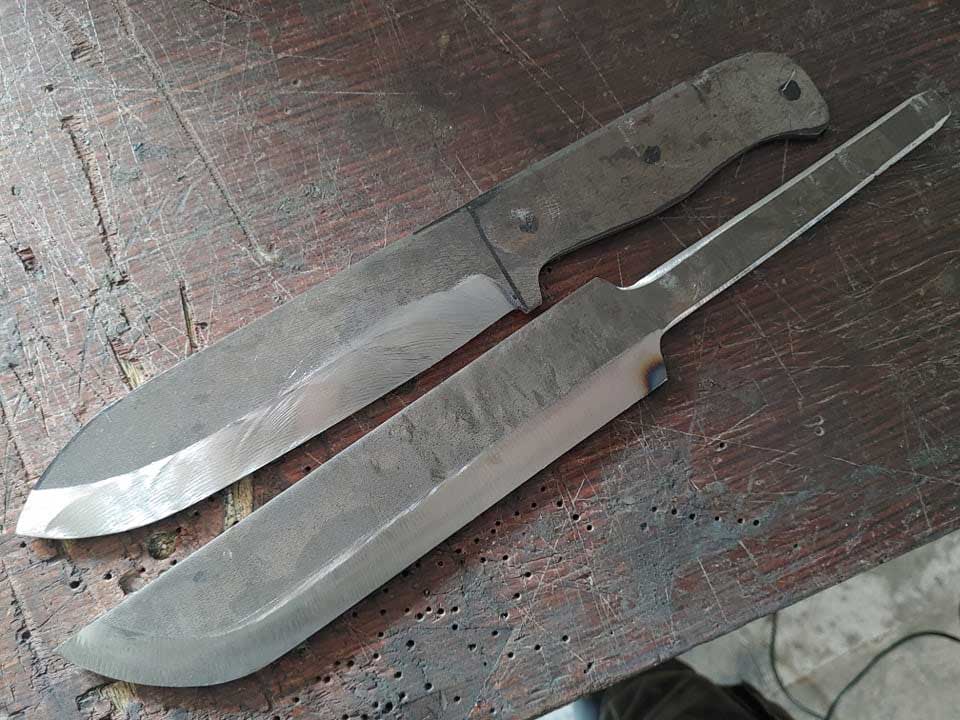
The tang (or shank) of a knife is the back portion of the blade that connects to the handle. Tangs are often invisible as they’re hidden inside of the grip, and they’re important because they determine a knife’s resistance. There are five different types of tang:
- Full Tang

- Skeletonized Tang

- Partial Tang

- Narrowing Tang

- Stick Tang

While it might seem as if all tangs should be made the same length as the handle, weight and cost considerations in manufacturing mean that tangs are not always complete pieces. A full tang always makes a knife sturdier, and if the handle breaks, it can easily be replaced with some paracord, leaving you still with a fully-functioning knife. The smaller the tang, the more fragile the knife. (Incidentally, that busts apart the myth of the knife at the center of the iconic movie Rambo: The hollow-handled knife Sylvester Stallone’s character is allegedly using as a reliable, versatile tool would actually break easily). Check a knife you’re considering purchasing for a hollow handle; a wobbling handle is an almost certain indicator of a small tang. When it comes to buying a good survival knife, it’s definitely best to go with a blade with a bigger tang.
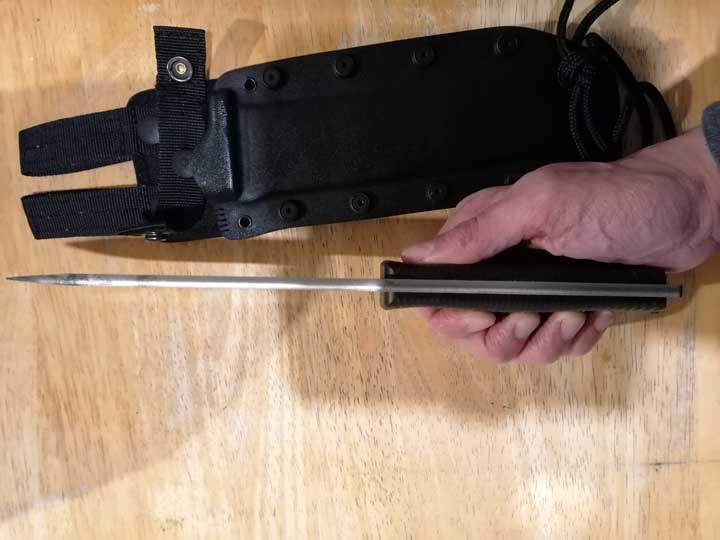
Keep in mind that the thickness if the tang matters as well: A full but thin tang is still vulnerable to breakage. Go for a tang at least 3mm or 1/8” thick.
What is the best edge for a survival knife?
The edge of a knife refers to the part that grinds and cut surfaces. The ideal knife edge is symmetrical and resembles a “V” shape, which is technically called a V-grind or a Scandinavian Grind. Such edges are easier to sharpen and control during cutting. Most blades marketed as survival knives have a V-grind, which makes this part of the selection process a little more straightforward. Non-symmetrical grinds—also called “chisel grinds”—are not ideal as all-in-one survival knives because they’re better suited for cutting through soft surfaces. To learn more about different types of grinds, check out this video:
What point is best for a survival knife?
Different knife points are better or worse depending on your personal preference and the tasks you’re looking to perform.
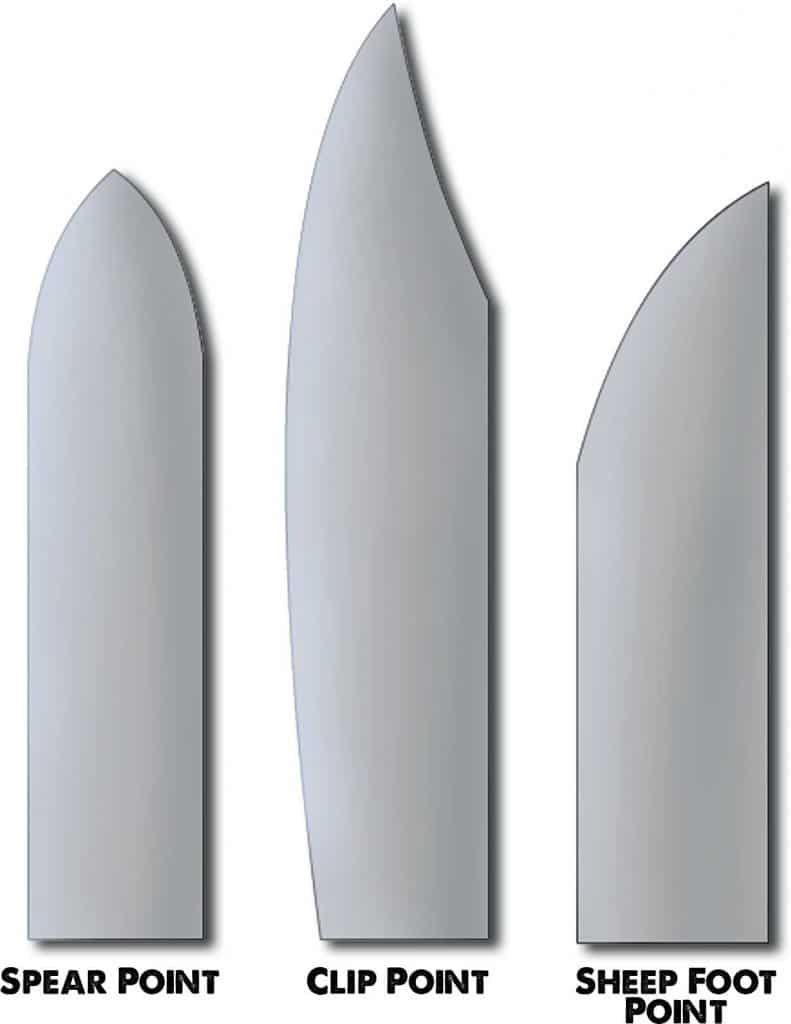
When it comes to survival knives, sharp blades with pointy tips are a must. There are three types of points that are used for different precision tasks:
- Digging
- Picking
- Hunting-related Purposes
The solidly built clip point with its long, flat area is useful for carving and batoning. The spear point is highly durable and good for cutting. The sheep point is basically a mix between the two. Out of the three, the clip style provides the most versatile point for an all-in-one type of survival knife on account of its flat back. While a spear point is handy for (surprise, surprise) spearing, it lacks a flat back and doesn’t function as well for tasks requiring a small tip; this makes it less versatile and dangerous if hand pressure is required. At the end of the day, all of the three types of points are useful so long as your knife is sharp with a pointed tip.
Blade material
Several types of steel are used to make knives. Some blades—“carbon steel” models—are richer in carbon than others. Most people opt for carbon-steel blades, unless the environment in which they’ll be using the knife will expose it to a lot of water and/or salt. These elements cause corrosion, and carbon-steel blades are more prone to rusting than other types. If you’ll be using your knife in this kind of environment, we recommend going for a stainless-steel blade instead, as it’ll be much more resistant to rust than carbon steel. That said, stainless steel isn’t completely immune to rust, and requires care and maintenance in the form of sharpening and applications of oil along the blade. Although stainless steel is more resistant, it’s also significantly harder to sharpen. Long story short, choose your blade material according to the environment in which you’ll mainly be using your survival knife.
A Survival Knife’s Handle
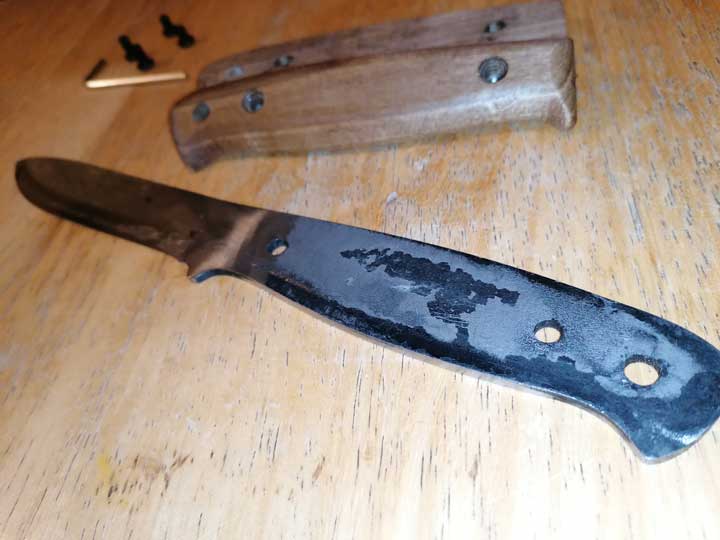
You’ll see knives with handles made from a number of different materials, the most common of which are:
- Micarta: This is easily one of the most common types of materials used for a survival knife’s handle, as it offers a good, strong grip. Micarta is a composite material made from synthetic resin and linen. It offers high resistance to humidity, temperature changes, and abrasion, and it requires zero maintenance.
- G10: Made from fiberglass and synthetic resin, G10 is another of the most common materials in knife handles. Performance-wise, it’s quite similar to Micarta, but the latter delivers a better grip in humid climates.
- Rubber: Immune to humidity, rubber can provide a great grip depending on the texture, but it’s sensitive to heat.
- Wood: Wood handles are the least-recommended for a survival knife given their tendency to eventually crack. It’s material derived from a living organism, and different environmental factors cause it to change across time.
Does the color matter?

Surprisingly—yes!
Although it may seem irrelevant, your knife’s color is somewhat important. A knife that blends in with its environment is at risk of being lost, after all. A survival knife is a working tool you need to be able to find easily; it’s also an investment you’d surely like to keep in your toolkit. If you only have one knife, play it safe and go with a colorful handle.
Sheaths
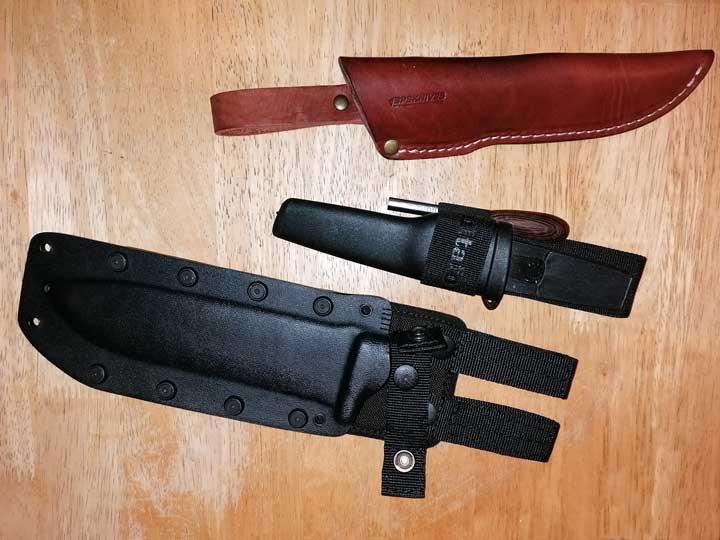
Sheaths serve a single task: protecting you from your own knife. There are different types of sheaths, which may hang from your belt or the buttons of your clothes. Some can be fixed to either side, others only on one, but these are subjective choices. When assessing a sheath, the most important factors to consider are:
- Your sheath should lock the knife snugly and safely with no possibility of it slipping out.
- The blade of the knife shouldn’t be able to perforate the sheath.
A Good Survival Knife: Your Best Friend in the Wilderness
As you can see from the above breakdown of a knife’s different components, not all knives are suited to be all-in-one tools. It’s important to consider the function of each part of a knife so you can choose the one that’ll deliver as the survival tool you actually need. Remember: If this will be your first survival knife, it doesn’t need to be expensive or possess every feature. This is a knife to help you learn and grow: Treat it as a gateway and as a teacher. You’ll learn what materials and features you need and prefer partly by using a knife firsthand in different scenarios and settings.




